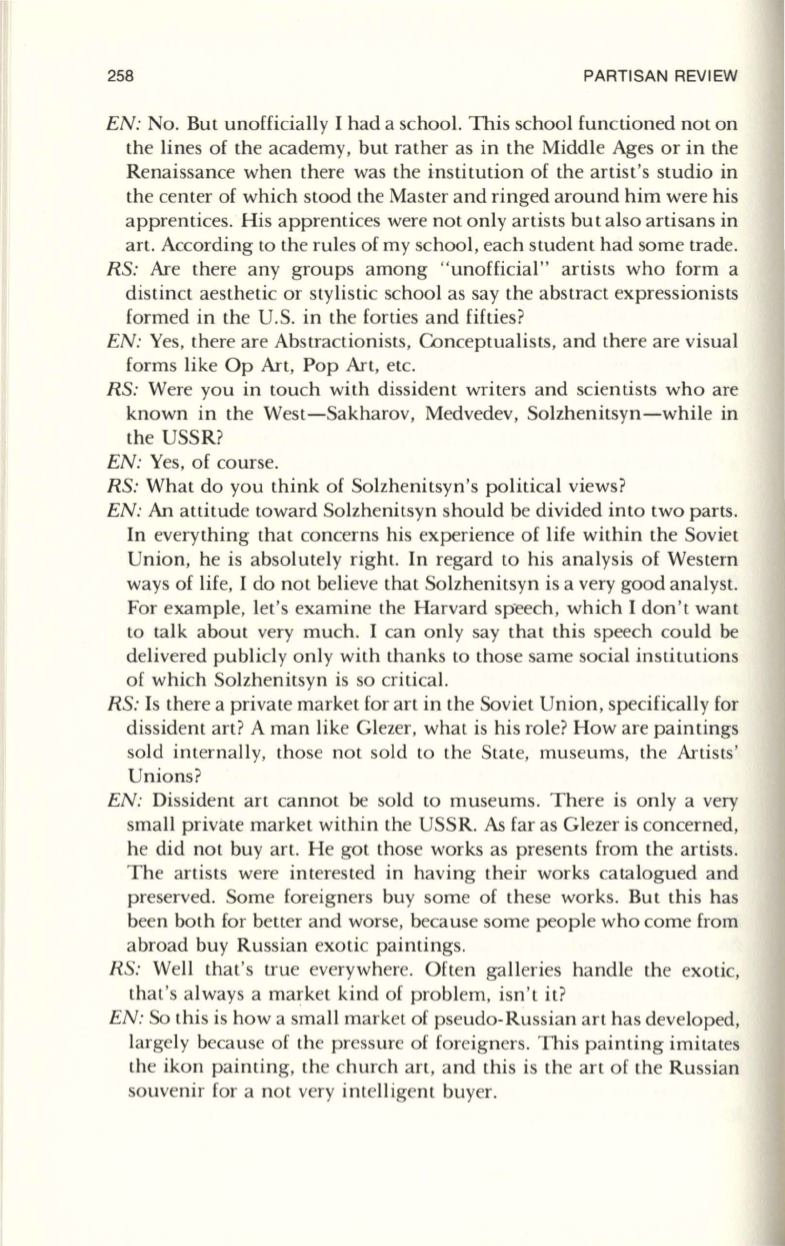
258
PARTISAN REVIEW
EN:
No. But unofficially I had a school. This school functioned not on
the lines of the academy, but rather as in the Middle Ages or in the
Renaissance when there was the institution of the artist's studio in
the center of which stood the Master and ringed around him were his
apprentices. His apprentices were not only artists bu t also artisans in
art. According to the rules of my school, each student had some trade.
RS:
Are there any groups among " unofficial" artists who form a
distinct aesthetic or stylistic school as say the abstract expressionists
formed in the U.S. in the forties and fifties?
EN:
Yes, there are Abstractionists, Conceptualists, and there are visual
forms like Op Art, Pop Art, etc.
RS:
Were you in touch with dissident writers and scientists who are
known in the West-Sakharov, Medvedev, Solzhenitsyn-while in
the USSR?
EN:
Yes, of course.
RS:
What do you think of Solzhenitsyn's political views?
EN:
An
attitude toward Solzhenitsyn should be divided into two parts.
In
everything that concerns his experience of life within the Soviet
Union, he is absolutely right.
In
regard to his analysis of Western
ways of life, I do not believe that Solzhenitsyn is a very good analyst.
For example, let's examine the Harvard speech, which I don ' t want
to talk about very much. I can only say that this speech could be
delivered publicly only with thanks to those same social institutions
of which Solzhenitsyn is so critical.
RS:
Is there a private market for art in the Soviet Union, specifically for
dissident art? A man like Glezer, what is his role? How are paintings
sold internally, those not sold
to
the State, museums, the Artists'
Unions?
EN:
Dissident art cannot
be
sold to museums. There is only a very
small private market within the USSR.
As
far as Glezer is concerned,
he did not buy art. He got those works as presents from the artists.
The artists were interested in having their works catalogued and
preserved. Some foreigners buy some of these works. But this has
been both for better and worse, because some people who come from
abroad buy Russian exotic paintings.
RS:
Well that's true everywhere. Often ga ll eries handle the exotic,
that's always a market kind of problem, isn't it?
EN:
So this is how a small market of pseudo- Russian art has developed,
largely because of the pressure of foreigners. This painting imitates
the ikon painting, the church art, and this is the art of the Russian
souvenir for a not very intelligent buyer.


